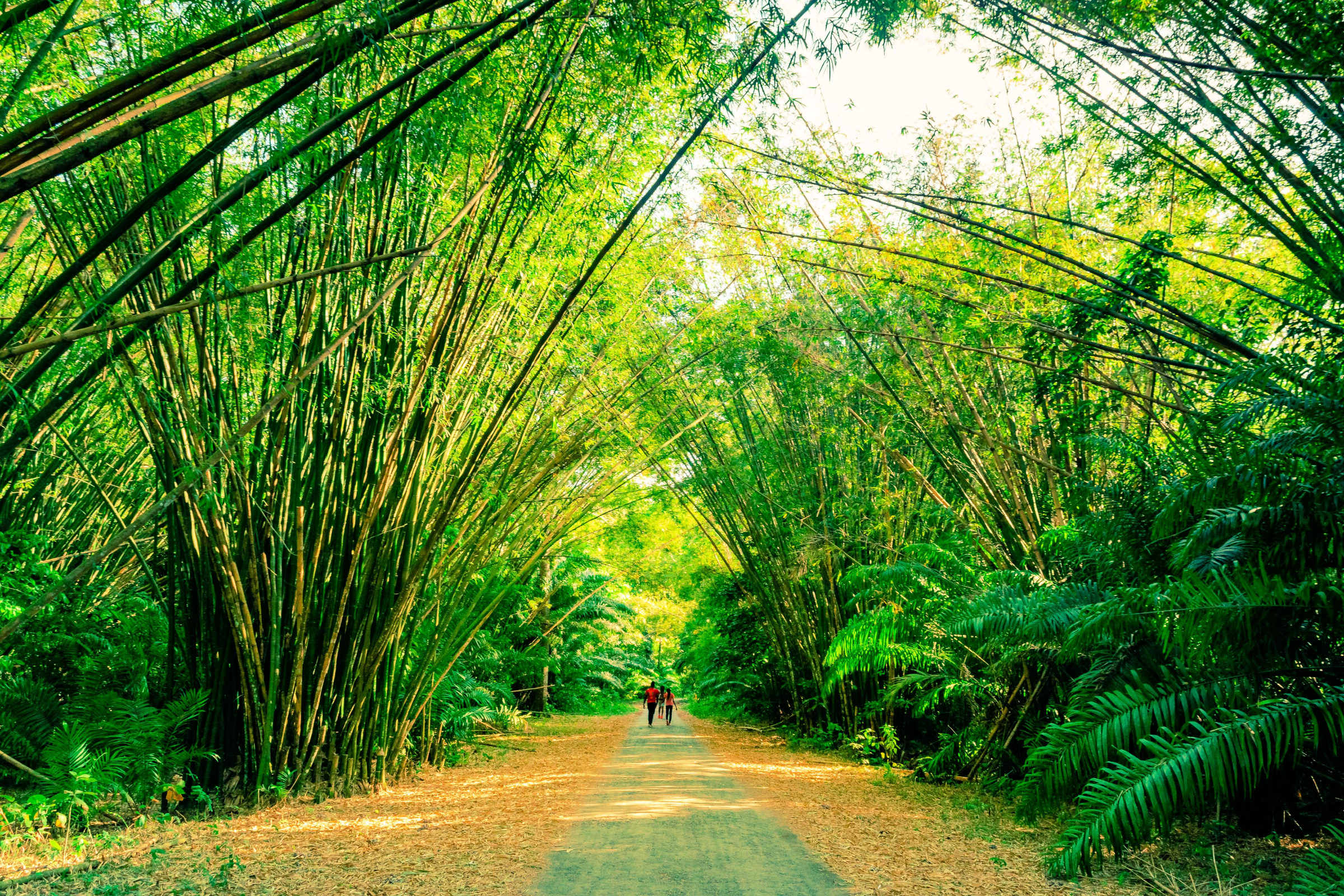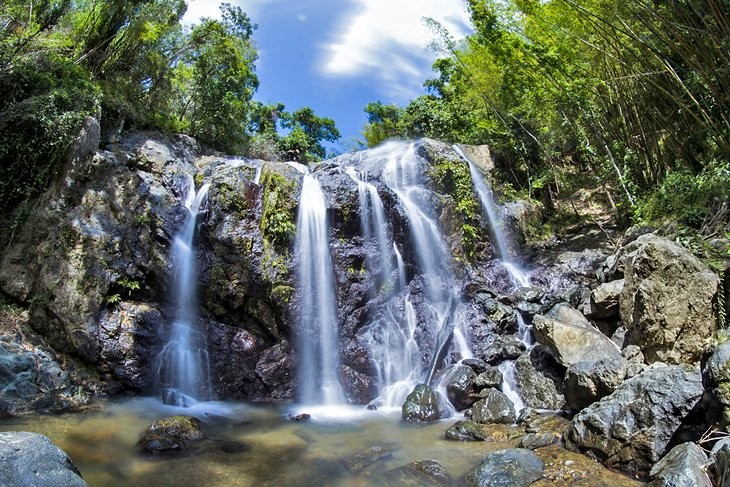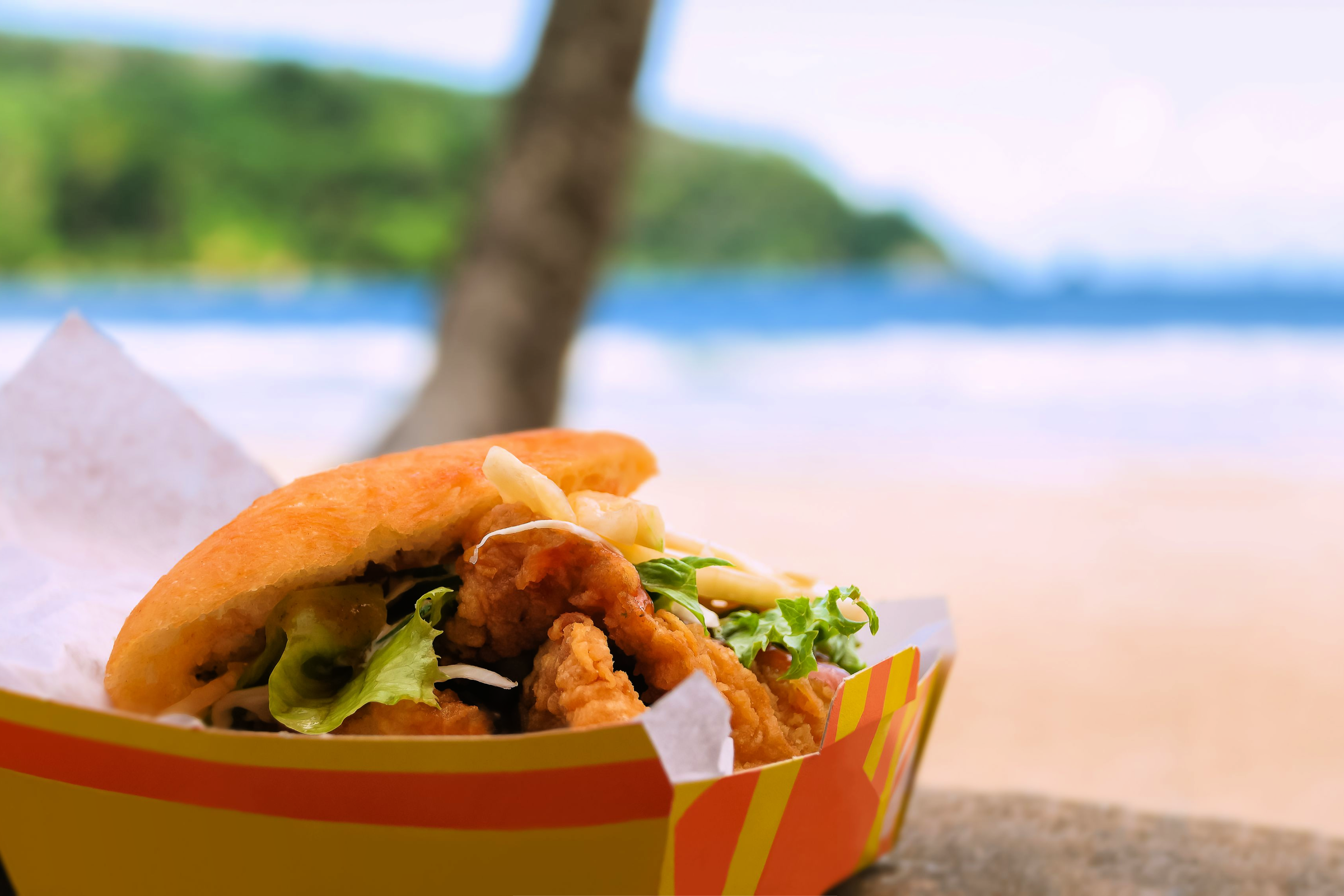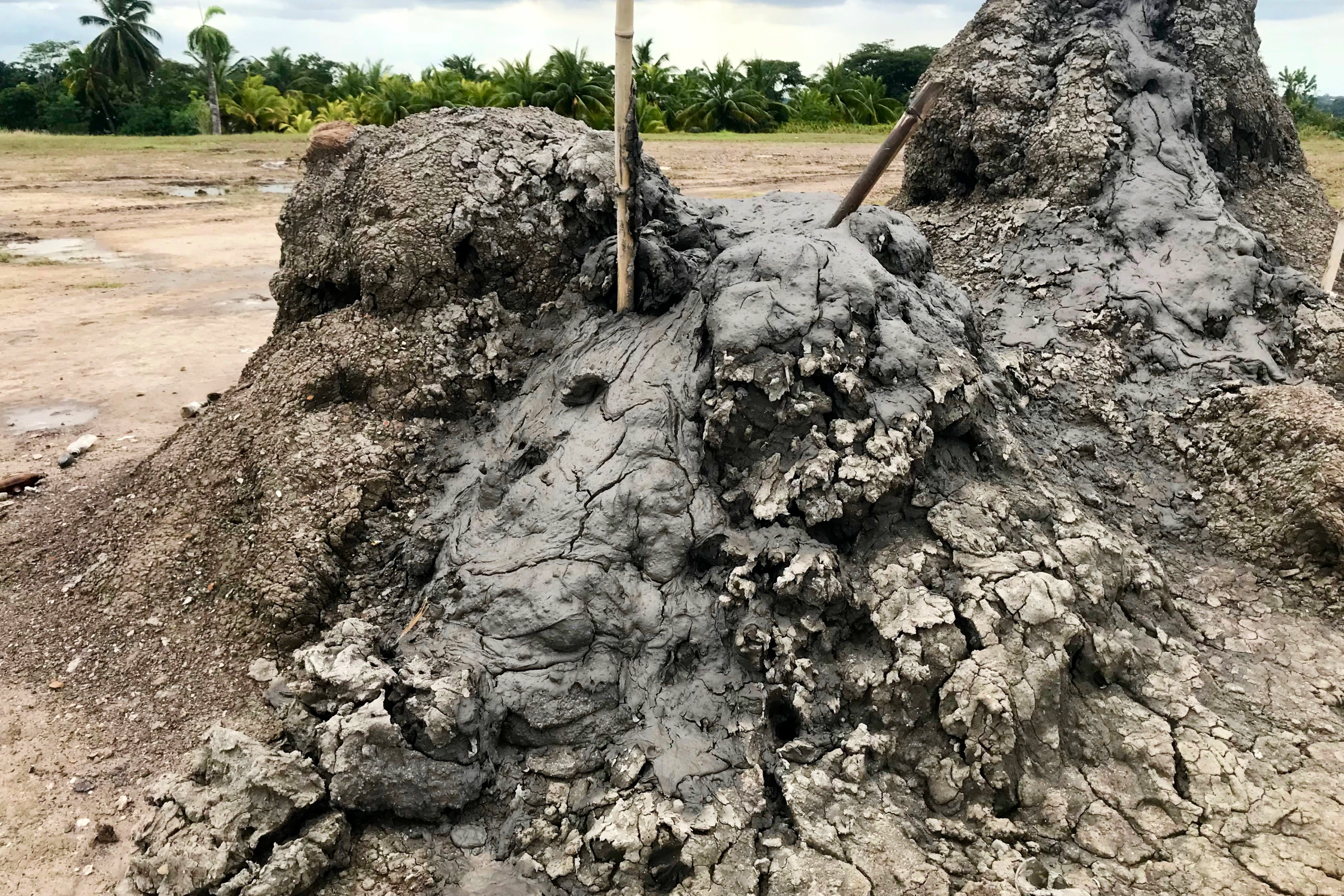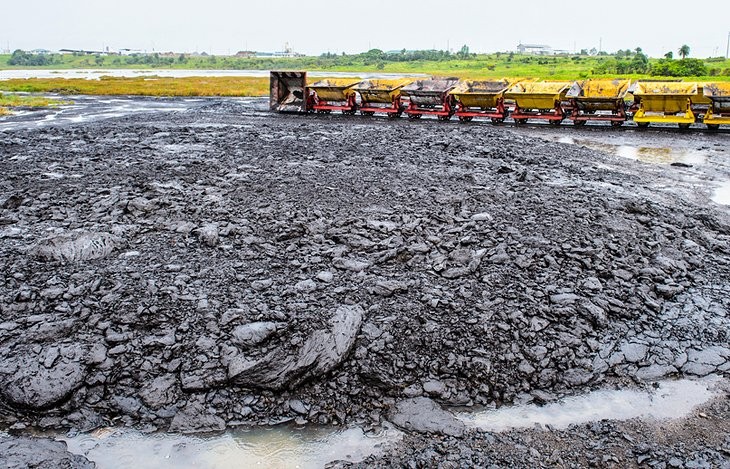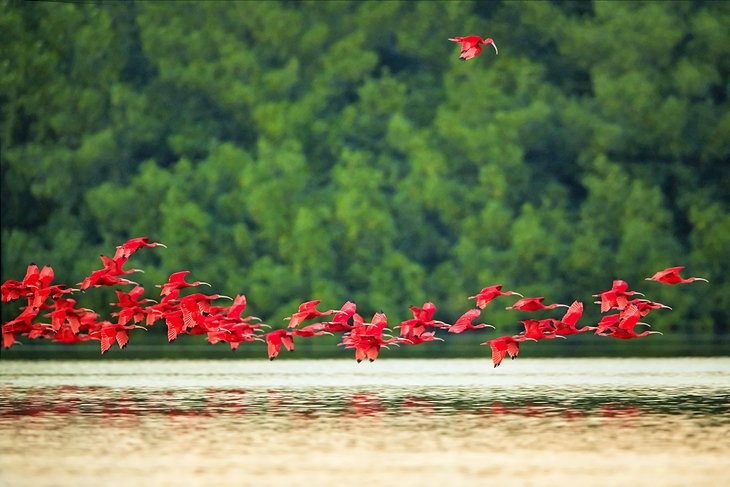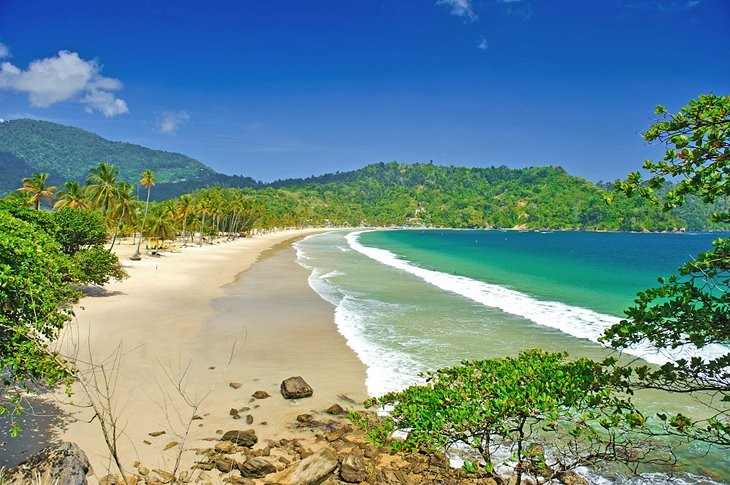Trinidad and Tobago is a Caribbean nation located in the southernmost part of the Lesser Antilles, in the West Indies, and northeast of the Venezuela coast. Interestingly, it has not always been a twin island country! Tobago changed many hands up until 1889 and was a colony of the Spanish, then the British, and finally the French and the Dutch, while Trinidad was originally a Spanish colony. The world heard of the Trinidad and Tobago nation for the first time in 1889, and 63 years later, it achieved its independence.
Today, the country consists of the two main islands of Trinidad and Tobago, as well as several smaller islands, enchanting visitors with its diverse cultural background and providing people of various races with a hospitable and inviting land to live together in harmony. This rich history has also led to the birth of the Carnival, an extremely popular festival featuring the ever-popular steelpan and calypso music that draws thousands of worshipers annually.
Interesting Facts About Trinidad & Tobago
- The motto of the country is “We Aspire Together, Together we Achieve”, which is also depicted in its Coat of Arms.
- The Trinidad and Tobago Coat of Arms promotes achievement and harmony among the people of the two islands while encompassing the National Symbols of the twin-island nation, the Hummingbird, the Cocrico, and the Scarlet Ibis.
- Trinidad and Tobago have massive gas and oil reserves, which makes them one of the wealthiest Caribbean countries.
- Christopher Columbus named the largest island of the nation “The Island of the Trinity” (La Isla de la Trinidad) in 1498 during his 3rd voyage, while Tobago is believed to have gotten its name from the tobacco that was widely grown and smoked by the natives of the smaller island.
- The first inhabitants of Trinidad were the Arawak people that originated from a delta region of Venezuela called Orinoco River.
The Symbolism of the National Flag
The Trinidad and Tobago flag consists of a diagonal black stripe on a red background with white borders. This particular colour combination is believed to signify the elements of fire, water, and earth.
Other accounts claim that black represents purpose, strength, and unity, while red stands for the warmth and energy of the sun. It is also a symbol of the inhabitants’ courage and friendliness, as well as the vitality of both the nation and the people that constitute it. As for white, it is indicative of the sea that divides and, at the same time, connects the two main islands of the country. It also represents the purity of the people in Trinidad and Tobago, along with the purity of their desires and wishes.
Record-Holding (for the Best and Worst)!
- Trinidad and Tobago is an amazing country, impressing travellers with many unique experiences and attractions. To begin with, the country is home to the world’s largest natural asphalt deposit – La Brea Pitch Lake, which welcomes visitors with nearly 10 million tons of asphalt in the southwest of Trinidad.
- Staying in Trinidad, the world’s densest nesting beach for leatherback turtles is also here. In addition, the Tobago Main Ridge Forest Reserve which was established in 1776 is the oldest protected rainforest in all of the Western Hemisphere.
Here are a Few More Facts About Trinidad and Tobago’s Leading Positions:
- The country has a particularly high species-to-area-ratio and is one of the most biodiverse places in the world, with around 2,200 species of flowering plants, 100 species of mammals, 400 species of birds, 30 species of amphibians, and 85 species of reptiles.
- The largest brain coral in the world is believed to be found in the waters surrounding Trinidad and Tobago.
- One of the hottest chilli peppers in the world grows in Trinidad and Tobago and is called the Moruga Scorpion. Until 2017, it was the hottest chilli pepper in the world, with a heat rating of 1.2 million SHUs (Scoville Heat Units). It was then succeeded by another chilli, the Carolina Reaper.
- One of the world’s greatest-ever batsmen, Brian Lara, is from Trinidad and Tobago, and even holds the record for the most runs scored in an inning in first-class and international (aka Test) cricket.
- Trinidad and Tobago does not yet have any UNESCO World Heritage Sites at the moment of this writing. However, three properties are about to be submitted for nomination.
- Surprisingly, the country has the highest CO2 emissions in the world after Qatar (33.97 tons per person), when measured by metric tons per capita.
Weather
Trinidad and Tobago has a tropical climate with warm-enough temperatures throughout the year (around 28oC or 84.2oF on average), and both a wet and dry season each taking up almost half of the year (from May through October, the hot season – and June through December, the rainy season). However, the presence of trade winds helps cool down the perceived temperatures during the hot season, making it feel less intense. Overall, though, you won’t have any significant obstacles, weather-wise if you want to enjoy water sports and outdoor activities except for, perhaps, a few months during the wet season.
Facts you Probably Didn't Know About Trinidad & Tobago
- Trinidad and Tobago is the birthplace of the steel pan, which was developed in the 20th century and is the only musical instrument in the world that is made out of metal objects (industrial waste), such as biscuit bins, oil drums, dustbins, paint pots, and car parts.
- The famous Limbo dance also started in Trinidad and Tobago, originating from the African heritage of the country.
- Tobago was used as a base for raiding ships during the 18th century when pirates were flocking the Caribbean Sea. However, it appears that there has been a return of piracy to the region in recent years, with instances of armed Venezuelan fishermen (presumably from Trinidad) preying on passing ships.
- The Carnival is probably the most uniquely celebrated event in Trinidad and Tobago. While in the rest of the world, it is a multi-day festival, in Trinidad and Tobago it is a huge celebration starting as early as August, with dance parties (aka soca fetes) and climaxing in February, just before Ash Wednesday. The festivities include steel pans, calypso, costumes, and various competitions.
Trinidad and Tobago is a Caribbean nation located in the southernmost part of the Lesser Antilles, in the West Indies, and northeast of the Venezuela coast. Interestingly, it has not always been a twin island country! Tobago changed many hands up until 1889 and was a colony of the Spanish, then the British, and finally the French and the Dutch, while Trinidad was originally a Spanish colony. The world heard of the Trinidad and Tobago nation for the first time in 1889, and 63 years later, it achieved its independence.
Today, the country consists of the two main islands of Trinidad and Tobago, as well as several smaller islands, enchanting visitors with its diverse cultural background and providing people of various races with a hospitable and inviting land to live together in harmony. This rich history has also led to the birth of the Carnival, an extremely popular festival featuring the ever-popular steelpan and calypso music that draws thousands of worshipers annually.
Interesting Facts About Trinidad & Tobago
- The motto of the country is “We Aspire Together, Together we Achieve”, which is also depicted in its Coat of Arms.
- The Trinidad and Tobago Coat of Arms promotes achievement and harmony among the people of the two islands while encompassing the National Symbols of the twin-island nation, the Hummingbird, the Cocrico, and the Scarlet Ibis.
- Trinidad and Tobago have massive gas and oil reserves, which makes them one of the wealthiest Caribbean countries.
- Christopher Columbus named the largest island of the nation “The Island of the Trinity” (La Isla de la Trinidad) in 1498 during his 3rd voyage, while Tobago is believed to have gotten its name from the tobacco that was widely grown and smoked by the natives of the smaller island.
- The first inhabitants of Trinidad were the Arawak people that originated from a delta region of Venezuela called Orinoco River.
The Symbolism of the National Flag
The Trinidad and Tobago flag consists of a diagonal black stripe on a red background with white borders. This particular colour combination is believed to signify the elements of fire, water, and earth.
Other accounts claim that black represents purpose, strength, and unity, while red stands for the warmth and energy of the sun. It is also a symbol of the inhabitants’ courage and friendliness, as well as the vitality of both the nation and the people that constitute it. As for white, it is indicative of the sea that divides and, at the same time, connects the two main islands of the country. It also represents the purity of the people in Trinidad and Tobago, along with the purity of their desires and wishes.
Record-Holding (for the Best and Worst)!
- Trinidad and Tobago is an amazing country, impressing travellers with many unique experiences and attractions. To begin with, the country is home to the world’s largest natural asphalt deposit – La Brea Pitch Lake, which welcomes visitors with nearly 10 million tons of asphalt in the southwest of Trinidad.
- Staying in Trinidad, the world’s densest nesting beach for leatherback turtles is also here. In addition, the Tobago Main Ridge Forest Reserve which was established in 1776 is the oldest protected rainforest in all of the Western Hemisphere.
Here are a Few More Facts About Trinidad and Tobago’s Leading Positions:
- The country has a particularly high species-to-area-ratio and is one of the most biodiverse places in the world, with around 2,200 species of flowering plants, 100 species of mammals, 400 species of birds, 30 species of amphibians, and 85 species of reptiles.
- The largest brain coral in the world is believed to be found in the waters surrounding Trinidad and Tobago.
- One of the hottest chilli peppers in the world grows in Trinidad and Tobago and is called the Moruga Scorpion. Until 2017, it was the hottest chilli pepper in the world, with a heat rating of 1.2 million SHUs (Scoville Heat Units). It was then succeeded by another chilli, the Carolina Reaper.
- One of the world’s greatest-ever batsmen, Brian Lara, is from Trinidad and Tobago, and even holds the record for the most runs scored in an inning in first-class and international (aka Test) cricket.
- Trinidad and Tobago does not yet have any UNESCO World Heritage Sites at the moment of this writing. However, three properties are about to be submitted for nomination.
- Surprisingly, the country has the highest CO2 emissions in the world after Qatar (33.97 tons per person), when measured by metric tons per capita.
Weather
Trinidad and Tobago has a tropical climate with warm-enough temperatures throughout the year (around 28oC or 84.2oF on average), and both a wet and dry season each taking up almost half of the year (from May through October, the hot season – and June through December, the rainy season). However, the presence of trade winds helps cool down the perceived temperatures during the hot season, making it feel less intense. Overall, though, you won’t have any significant obstacles, weather-wise if you want to enjoy water sports and outdoor activities except for, perhaps, a few months during the wet season.
Facts you Probably Didn't Know About Trinidad & Tobago
- Trinidad and Tobago is the birthplace of the steel pan, which was developed in the 20th century and is the only musical instrument in the world that is made out of metal objects (industrial waste), such as biscuit bins, oil drums, dustbins, paint pots, and car parts.
- The famous Limbo dance also started in Trinidad and Tobago, originating from the African heritage of the country.
- Tobago was used as a base for raiding ships during the 18th century when pirates were flocking the Caribbean Sea. However, it appears that there has been a return of piracy to the region in recent years, with instances of armed Venezuelan fishermen (presumably from Trinidad) preying on passing ships.
- The Carnival is probably the most uniquely celebrated event in Trinidad and Tobago. While in the rest of the world, it is a multi-day festival, in Trinidad and Tobago it is a huge celebration starting as early as August, with dance parties (aka soca fetes) and climaxing in February, just before Ash Wednesday. The festivities include steel pans, calypso, costumes, and various competitions.




